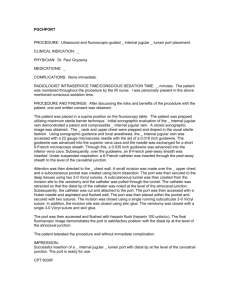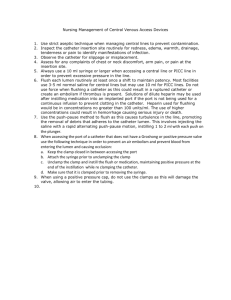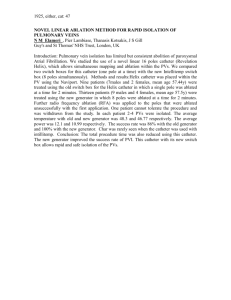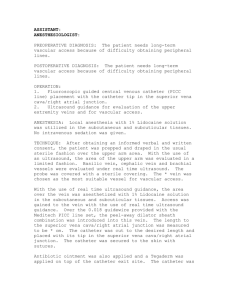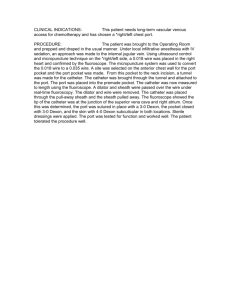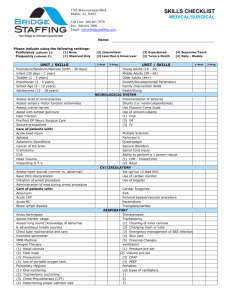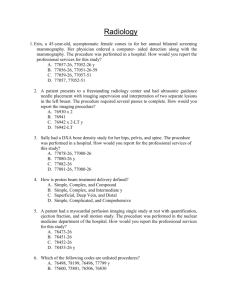Ultrasound and Fluoroscopic-Guided Hemodialysis Catheter Insertion
advertisement
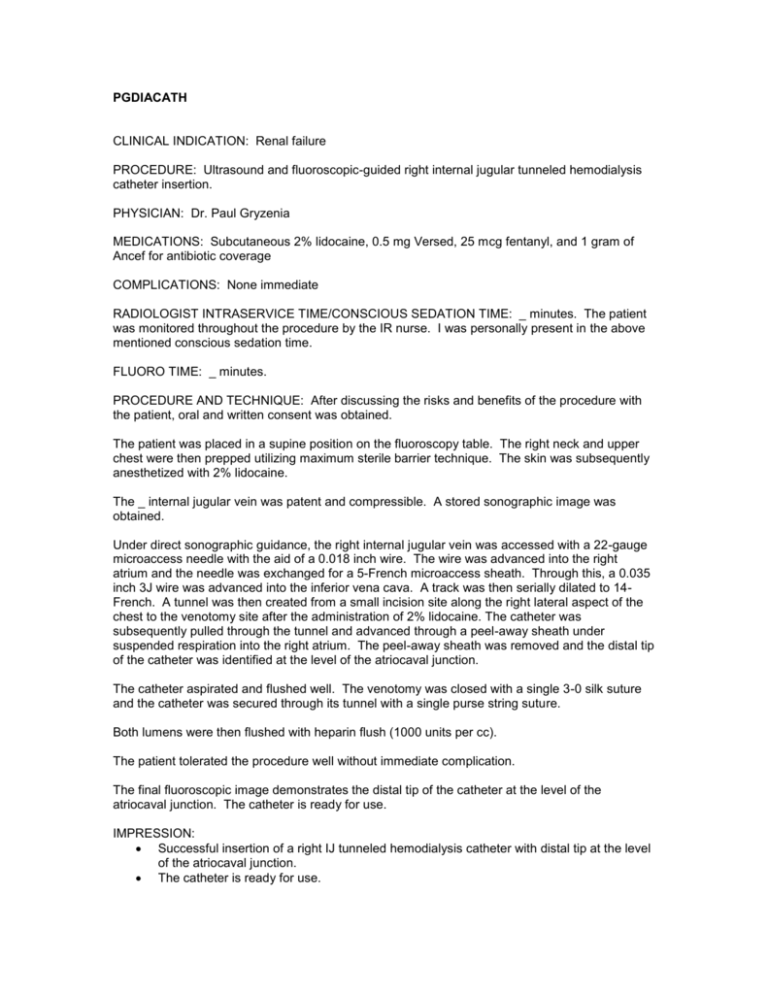
PGDIACATH CLINICAL INDICATION: Renal failure PROCEDURE: Ultrasound and fluoroscopic-guided right internal jugular tunneled hemodialysis catheter insertion. PHYSICIAN: Dr. Paul Gryzenia MEDICATIONS: Subcutaneous 2% lidocaine, 0.5 mg Versed, 25 mcg fentanyl, and 1 gram of Ancef for antibiotic coverage COMPLICATIONS: None immediate RADIOLOGIST INTRASERVICE TIME/CONSCIOUS SEDATION TIME: _ minutes. The patient was monitored throughout the procedure by the IR nurse. I was personally present in the above mentioned conscious sedation time. FLUORO TIME: _ minutes. PROCEDURE AND TECHNIQUE: After discussing the risks and benefits of the procedure with the patient, oral and written consent was obtained. The patient was placed in a supine position on the fluoroscopy table. The right neck and upper chest were then prepped utilizing maximum sterile barrier technique. The skin was subsequently anesthetized with 2% lidocaine. The _ internal jugular vein was patent and compressible. A stored sonographic image was obtained. Under direct sonographic guidance, the right internal jugular vein was accessed with a 22-gauge microaccess needle with the aid of a 0.018 inch wire. The wire was advanced into the right atrium and the needle was exchanged for a 5-French microaccess sheath. Through this, a 0.035 inch 3J wire was advanced into the inferior vena cava. A track was then serially dilated to 14French. A tunnel was then created from a small incision site along the right lateral aspect of the chest to the venotomy site after the administration of 2% lidocaine. The catheter was subsequently pulled through the tunnel and advanced through a peel-away sheath under suspended respiration into the right atrium. The peel-away sheath was removed and the distal tip of the catheter was identified at the level of the atriocaval junction. The catheter aspirated and flushed well. The venotomy was closed with a single 3-0 silk suture and the catheter was secured through its tunnel with a single purse string suture. Both lumens were then flushed with heparin flush (1000 units per cc). The patient tolerated the procedure well without immediate complication. The final fluoroscopic image demonstrates the distal tip of the catheter at the level of the atriocaval junction. The catheter is ready for use. IMPRESSION: Successful insertion of a right IJ tunneled hemodialysis catheter with distal tip at the level of the atriocaval junction. The catheter is ready for use.
